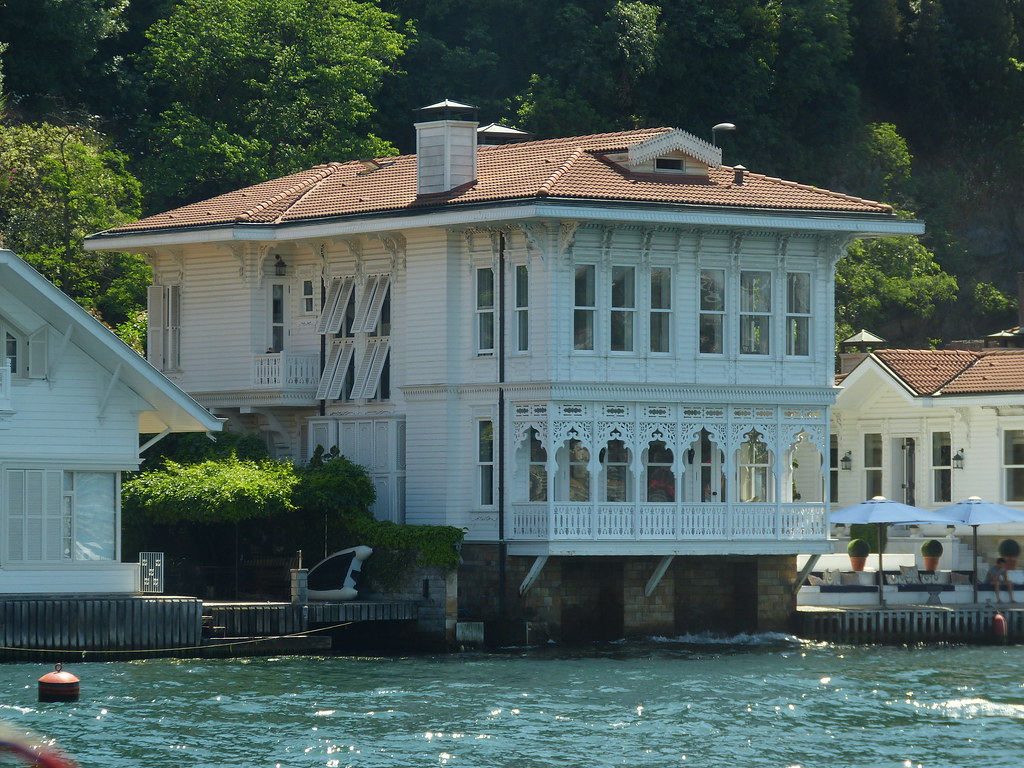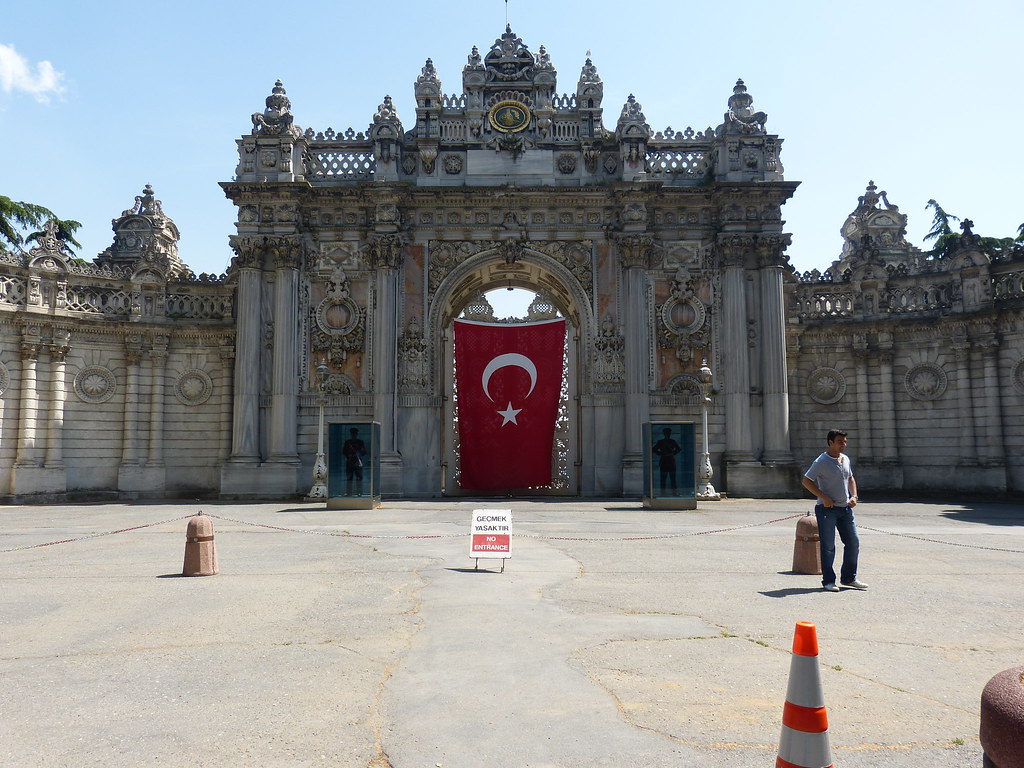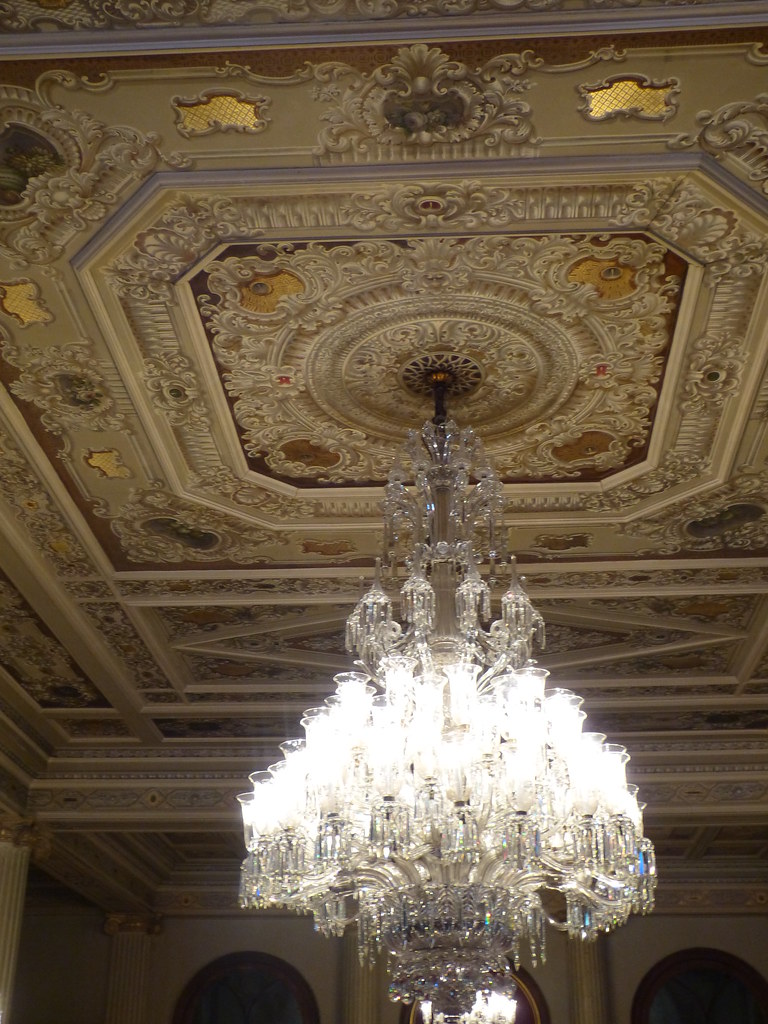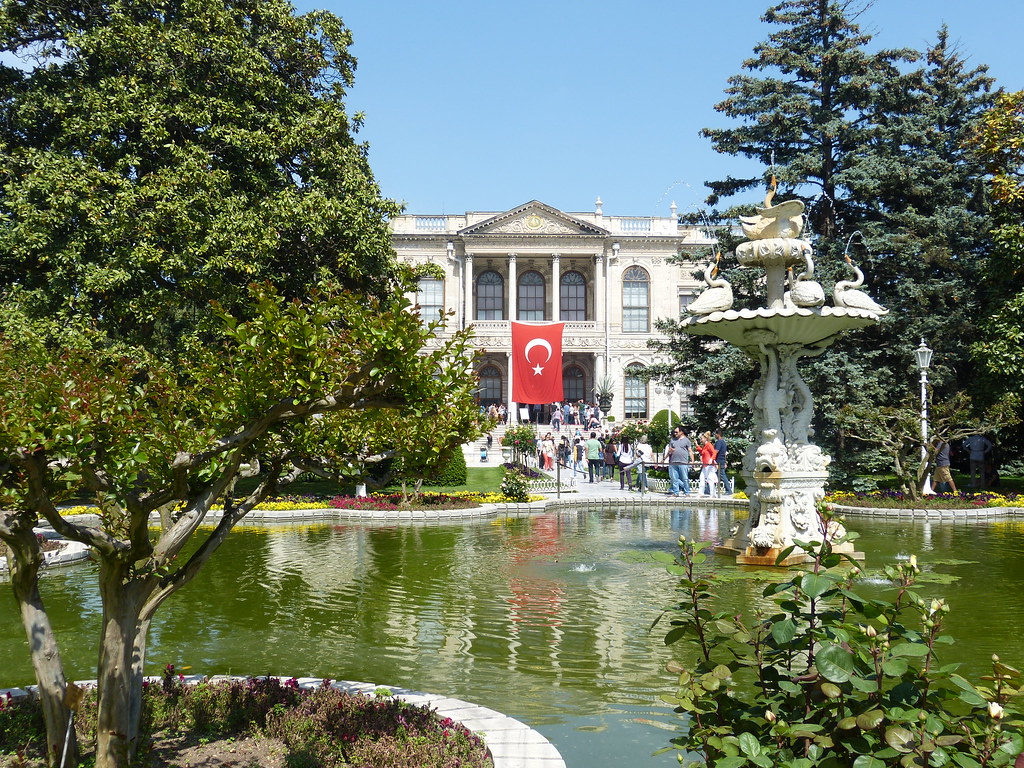There are times during your travels when you just feel you have to do something. It was the case for the Bosphorous trip I took during my 5-day stay in Istanbul: guidebooks and travel bloggers keep saying that no trip to Istanbul is complete without a trip to the Bosphorous. I must say that I agree that it helps to move away from Sultanahmet and Beyoğlu in order to understand the morphology of a city like Istanbul, but the Bosphorous trip kind of let me down.
This doesn't mean that you shouldn't do it, but simply that I didn't connect with the sights as strongly as I did with the rest of the city.
This doesn't mean that you shouldn't do it, but simply that I didn't connect with the sights as strongly as I did with the rest of the city.
 |
| Rumeli Hisari and the Fatih Sultan Mehmet Bridge on the Bosphorous |
First of all, I was worried about the touristy side of the Bosphorous trip. I had imagined a trip in a ferryboat used by locals, so I opted for the longer Bosphorous trip on the public ferry, which arrives almost at the end of the strait and then comes back, stopping at both the Anatolian and the European sides along the way. The other option is a private boat tour that goes closer to the shore but perhaps is more touristic. I was planning to make a couple of stops along the way and come back with a bus, like many guidebooks suggested, so I bought a one-way ticket (15TL).
First of all, I arrived at Eminönü, the same dock I used to go to Üsküdar on the Asian side of the city. The boat was waiting there for the passengers to board. Everybody was a tourist, to the point that they were selling audio guides. I bought one, but it was a mistake: it didn't work very well and I manually had to click on the building I saw from the boat, trying to guess basically.
The famous yalis, the wooden houses on the waterside, were nice but I couldn't understand which ones were fake and which ones were real, perhaps restored. I had imagined much bigger palaces on the shores, but then I am spoiled because I live in Venice. The only one I recognized from the boat was Dolmabahçe palace, in the neighbourhood of Beşiktaş. The landscape is pleasant, but nothing memorable.
 |
| Yali on the Bosphorous |
No information was given on timetables, on what were the best attractions to stop at. We decided to visit Dolmabahçe Palace, because Beylerbeyi (an Imperial Ottan summer residence built in the 1860s) was closing early that day. I had planned to stop at Rumeli Hisari, a fortress on the European side, but after seeing it from the boat I concluded that it wasn't that special. I had hoped to see the famous pink flowers in bloom but I guess it was too late. Maybe I was wrong about Rumeli Hisari, who knows!
We got off at Sariyer. Nothing to do there: I had expected a quaint little town or a fishing village, but what I found was a nondescript town with some waterside restaurants. We ate in a big restaurant with a terrace on the Bosphorous. I think my friend and I ordered a simple kebab, but they were very slow to serve us. After lunch our adventure on the minibus started! Instead of a regular bus, some girls (who were very excited about practicing their English with us, which made me think that this part of the Bosphorous doesn't get many tourists) told us it was faster to take the minibus. So we boarded this private-looking minivan that drove at a crazy speed towards our next destination.
Why I was disappointed with Dolmabahçe Palace
When we finally arrived in front of the palace, we found a line at the closed gate. The ticket office was also closed, and there was nobody who could explain what was happening. Nobody seemed to speak English, not the guards, and strangely not the visitors lining for the palace. We assumed that the ticket office had closed for the day and that no more visitors were allowed in the palace, as a sign seemed to explain. Thanks to my persistence, we waited ten minutes more in front of the closed gates, and somebody in the queue was kind enough to explain that the palace was free for the day, but that everybody had to wait for their turn to enter.
 |
| Looks closed, doesn't it? |
After the guards inexplicably allowed a larger group to enter, we made it through the gates. What we saw was a park with a clock tower in a style that looked almost baroque or rococo. The visit to the actual palace is allowed only through a guided tour. There are guided tours in Turkish and English. We waited for a tour in English to start and we were finally allowed in the palace. Before entering, we had to wear some plastic bags over our shoes since most of the palace is carpeted. My feet immediately felt hot and sweaty, it was very uncomfortable and I couldn't wait for the tour to end.
The tour guide spoke English in a funny way, and sometimes it was hard to understand what he was saying. Unfortunately, the tour was rushed (about 35-40 minutes), but there is no other way to see Dolmabahçe Palace. The palace itself is an interesting mixture of Ottoman architecture and Western influence, with an evident penchant for the rococo style, and lots of crystal. At times it felt tacky and showy, rather than opulent. Also, horribly dusty. On a more positive note, the crystal chandelier in the Ceremonial Hall is really impressive. The guide pointed out that it's not true that it was gifted by Queen Victoria, as it's written in some guidebooks, but the Sultans paid for all of it. As a matter of fact, the sultans fell into debt in order to build this palace.
We also visited the bedroom where Kamal Ataturk died, as well as the harem and the most luxurious rooms in the palace. Photos were not allowed inside, so this is the only one I managed to take. It is a photo of the chandelier in the entrance hall of the palace.
Some parts of the palace were inexplicably bare, others luxuriously furnished and decorated. Overall, it gave me the impression of a decadent empire. As a matter of fact, Dolmabahçe Palace was built in the middle of the 19th century when the Ottoman Empire was losing its grip. It remained the residence of the Ottoman Sultans until the end of the Caliphate in the 1920s, when it became the summer presidential residence of the republic. This is why Ataturk died here, in 1938.
 |
| The only picture I managed to take inside the palace |
Some parts of the palace were inexplicably bare, others luxuriously furnished and decorated. Overall, it gave me the impression of a decadent empire. As a matter of fact, Dolmabahçe Palace was built in the middle of the 19th century when the Ottoman Empire was losing its grip. It remained the residence of the Ottoman Sultans until the end of the Caliphate in the 1920s, when it became the summer presidential residence of the republic. This is why Ataturk died here, in 1938.
Overall, it wasn't as mind-blowing as Topkapi Palace, but since I didn't pay the entrance fee I cannot complain. On a normal day I think you'd pay 40 TL (€14,60/$19,60) for a joint ticket (Salamlik + Harem), it's way too much. I'd pay about half for that visit.
 |
| Dolmabahçe Palace |
The silver lining is that I learned something more about Turkish history, another piece of the puzzle let's call it. I think it's important to see Dolmabahçe Palace in order to understand the evolution of Turkish taste. Maybe just don't expect to like it madly!
Have you got any suggestions for a more satisfying Bosphorous trip? Were you luckier than me during your trip?
Have you got any suggestions for a more satisfying Bosphorous trip? Were you luckier than me during your trip?

It's been on my bucket list. Love the architecture and the scenery - simply stunning!
ReplyDeleteThat is indeed an interesting story, and as you said you learned more about Turkish history which is always a good thing. I'll keep this in mind when we travel to Turkey, thanks for the report!
ReplyDelete